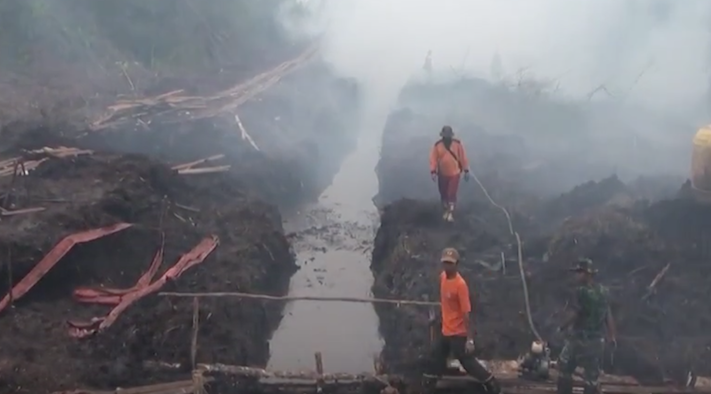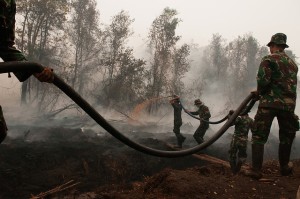The rainy season has begun in Indonesia, dousing most of the fires that have been burning across Sumatra and Kalimantan. Nature may have solved the problem for now—but the threat is far from over.
“Some parts of the country are going to be naturally drier in February and March—parts of Sumatra and eastern Kalimantan—and in an El Niño year, that will be more pronounced,” said Louis Verchot, Director of Forests and Environment at the Center for International Forestry Research (CIFOR).
“So we can expect another surge of fires,” he added.
The fires and the toxic haze they emit have had a major impact on people and the environment. Indonesia estimates that some 1.7 million hectares has been affected. Economic costs could rise to billions of dollars, and the country’s greenhouse gas emissions could reach new levels. More than half a million people have been treated for respiratory symptoms so far; the long-term health effects remain unknown.
WATCH THE VIDEO
Beyond the blaze: What next for Indonesia’s forests?
IN THE TRENCHES
Authorities faced a massive task in battling the fires, even with international support. And with more fires likely, identifying which actions worked and which didn’t is essential.
One issue under consideration is the digging of canals, or ditches.
“The reason the government digs ditches is to get access to water, but that water comes from within the peatland,” Verchot said.
Peat is organic matter with a very high water table in it; this slows down decomposition, which is why the peat accumulates.
“When you dig a ditch, all the water comes out and into the ditch, which means the peat now is drier, deeper in the profile, so it burns more,” Verchot said.
Don’t inhale: Scientists look at what the Indonesian haze is made of
Verchot and other CIFOR scientists are working with experts from Palangka Raya University in Central Kalimantan to measure the long-term effects of drainage and fire on the peatland. They have installed 22 field-based tools, known as R-SET-MH, to observe changes underground over time.
“We want to see the carbon loss due to drainage and belowground processes,” said Sigit Sasmito, a graduate researcher at CIFOR.
“We can also measure the benefits of re-wetting the peatlands.”
These data provide just one example of research that can support strategies to help overcome the problem.
But Verchot warns that long-term solutions must get underway sooner rather than later.
“This fire and haze, this event, was totally predictable. This problem can be solved,” he said.
“It is going to require strong political will. It’s going to require a lot of people doing things differently. And it’s going to require facilitation for people doing those things differently.”
And success will require more than enforcement.
“It also requires incentives, and creating the opportunities for people to do something to move off of these peatlands, and still find a way to make a living to ensure their livelihood for the future of their families,” Verchot added.
“That’s what this is all about—it has to be more of a human story. Solving it really means putting people in the center of the solution.”
 This topic will be featured at the 2015 Global Landscapes Forum.
This topic will be featured at the 2015 Global Landscapes Forum.
View the event details
THE BILLION-DOLLAR QUESTION
Research shows that millions of tons of carbon dioxide were emitted during the 1997–98 fires, contributing significantly to climate change. This year, the volume of emissions is expected to be the second worst on record.
 FACT FILE
FACT FILE
Clearing the smoke: The causes and consequences of Indonesia’s fires
Delegates at the upcoming UN Climate Change Conference in Paris will aim to achieve a legally binding and universal agreement on climate, with the aim of keeping global warming below 2













